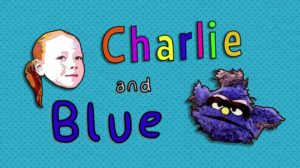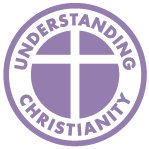The role of the Hindu Deity Shiva investigated through an audio-visual exploration of his iconic symbols and a meditational Mantra.
An investigation into how reflection on the image of Shiva and the Mahamrityunjaya mantra might help cope with different life-changes.
KS2 & 3. Originally written by Sushma Sahajpal, updated in April 2019.
Learning Outcomes
Emerging
- Talk about endings that are good and bad, and explain why they are good or bad
- Explain the meaning of two aspects of Shiva
Expected
- Explain what Shiva does for humanity in Hindu belief
- Describe and explain two aspects of Shiva worship; music, words, images, etc
- Describe two things that Hindus do on the festival of Shivrata
Exceeding
- Offer a view as to why we find endings hard
- Create an argument for why Shiva is an important deity in Hindu culture
Key words and concepts
Divine: In the Hindu context this refers to the Benevolent agency that transcends normal human comprehension.
Iccha: Will (or Desire) the motivating engine for all directed processes in the world.
Shakti: Raw Energy inherent in all matter in every existing world (denoted as feminine comparable to the Yin / Yang concept in Chinese Philosophy).
Deva: Divine Iccha (Will) at work in the world – masculine aspect (note: depicted as male), often translated as ‘God’ but this is a confusion with either the Abrahamic entitlement in the singular or in the plural with popular perception of Greek / Roman Mythology.
Devi: Divine Shakti (Force or Power) at work in the world – feminine aspect (note: depicted as female), often translated as ‘Goddess’ but this is a confusion with popular perception of Greek / Roman Mythology.
Murti: Form. The image or deity used as a focus of worship. ‘Idol’ should definitely not be used, and ‘statue’ may also cause offence.
TriDev / Trimurti: The collective reference for the three main Divine Agencies at work in the world (i.e. Brahma, Vishnu and Shiva).
Brahma: The Deva who embodies Divine Creative Intention (Conceives blueprints).
Vishnu: The Deva who embodies Divine Sustaining Intention (Supports development).
Shiva: The Deva who embodies Divine Transformative Intention (The All-knowing / witnessing Consciousness that facilitates timely completion / transition).
Divine Consort: Each of the TriDev is depicted with a corresponding Devi as a Consort (Marriage Partner). This teaches that Divine Intervention or Agency is the co-operative union of benevolent, transcending Will / Intention (masculine) and Power (feminine).
Tridevi: Tridevi is a collective reference for the three Consorts (Saraswati, Lakshmi and Parvati / Durga – more about them in the Navratri resource).
Parvati: The peaceful form of the consort of Shiva. Representing divine energy in benevolent balance and universal flourishing.
Durga: The fierce aspect of Devi Parvati who embodies the Power of Explosive Destruction / Transformation. Her stories tell of fierce battles killing demons and protecting the righteous. She can manifest when needed with the supreme power of the entire universe (Adi-Shakti). She is the Consort of Shiva (Divine Transformative Intention).
Vedas: The ancient Sanskrit Scriptures, some of which are used in Hindu Worship.
Mantra: This Sanskrit word has passed into English to mean any phrase that takes on an affirmational significance but for many Hindus it is used with its original meaning of a precisely composed combination of Vedic syllables with a powerful, beneficial impact on the listener in terms of both meaning and sound.
Devotee: A person who strongly believes in a religion or god and loyally puts their beliefs into practice.
Learning activities
WARNING: the subject of this resource, ‘change’ or ‘endings’, is one that needs treating with great sensitivity. Although subjects like death and suicide are not specifically raised in these activities, some pupils may experience such thoughts. It is a good idea to ensure that parents are aware that this sequence of lessons is included in the RE programme and that there are opportunities to raise any concerns with the school. If you are aware that individual pupils have been bereaved, or are particularly worried about being so, it will be important to make a careful judgement, with pupils and parents, about the timing of these learning activities.
This teaching and learning is based on the singing of the Mahamrityunjaya Mantra (from the Rig Veda). First find a clip of this on YouTube, such as the mantra being sung by Shankar Sahney (108 times!).
The learning will be further supported if the class can look at images of Shiva, as well as Shiva worship on Google images or videos of Shiva worship on Youtube.
Here is a transcript of the mantra with its translation:
OM Triyambakam Yajāmahe Sugandhim Pushti-Vardhanam, Urvārukamiva Bandhanān Mrityor Mukshiya Māmritāt.
We pray to All-seeing Lord Shiva who nourishes all beings, as the ripened fruit releases from its stem in perfect, timely separation, so may our endings be, freeing our energy to move endlessly on.
Explain that pupils are going to learn about how many Hindus deal with situations when it is time for something to end or irreversibly change. Explain that Hindus believe that there is Divine help available to all of us, not just Hindus, in the way a loving parent might want to help all his or her children. This help would be in whichever form is best for us and the situation we are dealing with. This will help them explore how Hindus and others react when things end and question whether endings are good or bad and what using powerfully destructive ability as a force for good might look like.
Remind them that Hindus believe that God is neither male nor female but is everywhere in everything and everyone. Thus they believe God can intervene to support righteous living, meaning ‘for universal good’, at anytime in any form including as a man, woman, child, animal, river, etc. Sometimes the intervention might be to facilitate new beginnings. [Can they think of examples? e.g. bringing forth 10 Commandments to Moses, or similar faith-founder stories.] Hindus believe that divine intervention can be just as crucial to bring things to an end, to make way for what needs to come next.
Explain that the class is going to look at Endings and that these can sometimes be very painful times, particularly if it’s the end of a life or of something special to us. Explain that when people are upset by change and endings they can get support to help them through difficult times.
Ask the pupils to think of endings that they they’ve been glad to have happen. [These might be unpleasant like uncomfortable journeys or activities / films they didn’t enjoy, an illness they recovered from or horrible neighbours that moved away, etc.] Notice whether this was hard or easy for them to come up with, and capture these in a list. Can they explain why they were glad for these to end?
Explain that we are next thinking about endings that we are not so pleased about.
First ask them to think of activities / events that they expect to end at set times but wish they didn’t. [e.g parties, day trips, the holidays, a favourite lesson or school year]. Again capture these in a separate list.
Ask the pupils to now think of endings that they can think of that might be difficult and unexpected. List these on a board. [These are typically loss of pets, occasionally grandparents, moving house, friends moving away, loss of favourite clothes, toys, books.]
Thirdly ask them to think of situations where they have had to be the ones to end / stop something or cause a big change. [e.g. decide to give away outgrown possessions, change a habit, rearrange their furniture, report something bad to a teacher / parent, stand up to defend someone from bullying, ]
Explain that the three types of challenging ‘endings’ listed here can be linked with aspects of the symbolism in a Hindu murti that they are going to see later [Shiva]:
- Involuntary and predictable: time related (symbolised by the moon; accepting seasons)
- Involuntary and unpredictable: event related (symbolised by the snake; we react)
- Voluntary and self-determined: situation related (symbolised by trident; we act)
Encourage the pupils to add as many examples of these three challenging types of ending as possible.
Ask pupils to work in groups with three very large pieces of paper per group. Ask the groups to write ‘Seasonal Endings’ in large letters in the middle of the first sheet, ‘Unexpected Endings’ in the middle of the 2nd and ‘Chosen Endings’ in the middle of the 3rd. Their task then is to write or draw around the key aspects in a circle, the ideas, actions, tools and questions they associate with those scenarios. Encourage the pupils to consider the differences between the three.
[You may need a fourth sheet (Other) for endings that are neither Seasonal nor unexpected and don’t fit into the archetypes. Reviewing the fourth sheets may offer up a potentially very useful broader discussion around other ending experiences.]
For each piece of paper, outside the circle of actions and ideas, encourage pupils in their groups to consider and capture the consequences if these endings did not occur. [If no-one died, just aged, if we did not outgrow our favourite toys, were permanently stuck in summer or Year 3, ]
Explain that part of flourishing and well-being – which is the stated purpose of divinity in Hinduism – is ensuring that things that are stuck, stagnant or not serving growth, do come to an end to make way for fresh new growth and opportunities.
Introduce the image of Shiva; either handing it out or showing them on the whiteboard. Explain that whilst he has many aspects, the picture represents in a human-like form one of the three main roles (Trimurti) of Divine Intelligence according to Hindus. Explain that many Hindus believe that meditating on this form offers support for people when they are challenged by endings, including death. Indicate that many of the artefacts in the picture all relate to the themes we have discussed. Before exploring the image in detail, give the pupils a chance to examine carefully for themselves the symbols and colours of the picture and see if they can suggest which symbols might go with which type of endings we have defined. [Note Shiva iconography has many complex metaphysical meanings, this banquet focuses on some specific, age-appropriate, theme-supporting aspects]
Next go through the picture engaging the pupils’ questions and ideas in considering what the deity is sitting on, holding and wearing. Explain that it is possible to take these definitions literally, i.e., as supernatural beings that may manifest in the world, but that it may also apply to our lives here and now in terms of wanting more of the skills and strengths he represents (such as wisdom and insight as symbolised by the open third eye) to be in our lives. Clarify, that just like a human ‘parent’, the Hindu Deities do not ‘take over’ and do things ‘for us’. Hindus believe that they assist and inspire us in finding the skills and strengths we need inside ourselves.
Now introduce the Mahamrityunjaya Mantra. Explain that this is the primary prayer for Shiva and that it is therefore important to show respect for people’s deeply held beliefs and practices. Show them the translation of the mantra and emphasise that many Hindus use it especially at times of change, to ask for divine help in moving on to a new phase of life.
Play the clip you have identified of the mantra being sung and ask pupils to say what images they noticed in the film and what they think Hindus might think was most important about the mantra, the music and the images.
Put the lists of ideas about the mantra and the images of Shiva that the pupils have suggested on the board below his image and ask them to add some more words to their sheets that they think describe what the different parts of the picture might mean to Hindus. What is special about Shiva that might help people at times of big change (what qualities does he have?)
Point out that two of Shiva’s qualities that might help people cope with big changes, when something ends and a new phase of life begins, are wisdom and inner strength. Ask pupils to think of examples of change and to identify which quality is most needed in each situation: wisdom or strength? Aim for concrete examples of each of these and list them on the board.
Go through each situation and ask what might lead a Hindu to believe that a prayer for wisdom and / or strength had been answered. Do they think that every ending / change simply has to be accepted? Bring out different points of view.
Invite pupils to link things that are important to them, e.g., who helps them to let go of things that need to end such as ending a play-date or sleep at the end of the day at bed- time, and ask them for examples of help can we give others with ending things -physical and mental / spiritual. What sort of skills would the person they turn to, need to help them and what form would that help take? For example, how might they persuade someone to donate unused favourite old toys to charity? [This could be a very worthwhile drama lesson with some interesting role-play activities about what they feel is appropriate assistance / relationship with persuading someone to give up a bad habit.]
Broaden the discussion into thinking about how people hoard things in attics and homes. Why do they do that? Why do people resist change? How could praying to Shiva help? How could their well-being improve by deciding to give some things away? What questions would they like to ask a person who prays to Shiva and recites the Mahamrityunjaya Mantra about the benefits of their beliefs and practice? What do they think such a person would say in reply? [By now the children would have a good understanding of the themes of Shiva. Hindus remind themselves of these ideas during Shivratri. What does this festival look like?]
Explain that during the festival of Shivratri many Hindus fast during the day and then feast and dance in the evening time on traditional festival food. During the fast Hindus only eat foods that can be eaten very simply and with minimal process such as fruit, nuts etc. This is to encourage them to take time out from focussing on their material appetites and wishes but instead to focus on their spiritual goals of personal discipline and following divine guidance rather than personal desires.
Ask pupils to identify what it might be good for them to give up for a day even though they might find it difficult to (such as a television program or chocolate) and give reasons. Consider asking them to actually try doing this for parts of the day and perhaps be sponsored if they succeed in doing so as a charity fundraiser. Journal their thoughts and feelings if they do it or make up an imaginary journal of someone their age trying to do so.
Encourage pupils to work in pairs or small groups and to use their imagination and what they have learnt about devotees of Shiva to make a list of different ways in which they show their beliefs.
Ask pupils whether Hindus would traditionally think endings are a good or bad thing? [No right or wrong answer to this] Is it better to resist change to preserve traditions for example, or to let old-fashioned things go and bring in new ways? What do the pupils think? Ask pupils to give reasons for their answers and compare across the class.
Provide pupils with a printed version of Shiva [See web links above for images of Shiva]. Ask them to work in pairs / small groups to recall aspects of the Deity, labelling the different items with key points about what Hindus believe is being illustrated / symbolised.
Encourage pupils to discuss the details of the pictures in their pairs / groups and then to share ideas on the most important aspects for them. Prompt their thinking by asking whether they can tell which aspect of change and endings is being represented by different symbols.
Ask pupils to then add their own labels saying what they think is good about each of the symbolic gifts, e.g. ‘The drum plays music’, ‘The trident is powerful’, etc. Provide pupils with some of these words to help them. [Of course the symbolism goes deeper than this; the idea is to start pupils thinking about how worshipping the different Deities helps believers in a variety of ways.]
Working in pairs or small groups again, remind pupils of the translation of the Mahamrityunjaya Mantra and ask them to work on a short mantra that might be used by Hindus to pray to Shiva at a time of great change and hardship. Ask them to write down their ideas and add some appropriate symbols from the film of the Mantra. Encourage them to add brief explanations of the symbols they have used.
Tell pupils the story of how Shiva drank the poison that is the central story of Shivratri:
The demi-gods (Devas) and demons (Asuras) fought and churned the oceans. A dark mass was created that was poisonous. A nectar of immortality was also created. To protect the universe from the dark mass Shiva swallowed it and held it in his throat. It burned and bruised his throat which turned blue. In holding the poison he saved all living things.
Deepen their understanding with questions such as: Where did the Poison come from? [Created by the same process that produced Divine Nectar] Why did Shiva offer to drink it? [It would have killed all living things otherwise.] What does this story explain about Shiva? [His Divine will contains and keeps the balance (neither swallowing nor spitting out) that prevents destruction.]
Ask pupils to write their own ‘metaphorical’ story with a character needing to call upon divine will to end something to meet a challenge for the benefit of our world. The challenges need to be such that each ending makes way for the particular blessing of something new beginning to overcome the problem. The story should include questions that the main character asks about their dilemmas and what the consequences might be of following or ignoring the help of a Deity.



